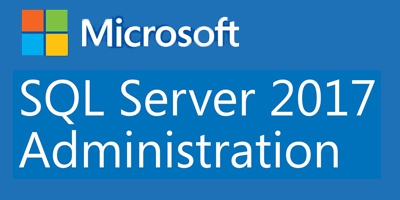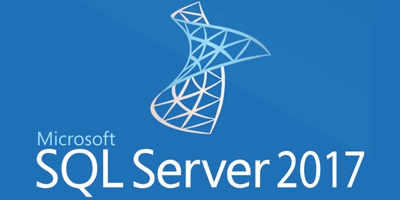Microsoft SQL Server 2017 for Administration
รายละเอียด Course ID: dbc-18

Microsoft SQL Server 2017 มาพร้อมคุณสมบัติใหม่ ๆ มากมาย ทั้งด้านการ monitoring, securing, optimizing พร้อมรองรับการทำงานพื้นฐานกับข้อมูลคุณ ในหลักสูตรนี้ผู้เรียนจะได้เรียนรู้การ encryption ข้อมูล การกำหนดสิทธิ์ในการทำงาน (access control) กำหนด role-level และการทำ dynamic data masking การจัดการด้านความปลอดภัยสำหรับ Microsoft SQL Server ในเรื่อง Authentication, Authorization และ Auditing ตลอดจนการ Config ค่าต่าง ๆ ได้อย่างเข้าใจเชิงลึก พื้นฐานการจัดเก็บข้อมูล พื้นฐานของการฟื้นฟูสภาพหากเกิดเหตุขัดข้อง และยังเพิ่มเติมด้วยเรื่องการจัดการความปลอดภัยให้กับงานโดยอัตโนมัติ
รอบการเปิดอบรม
วิดีโอแนะนำคอร์ส
ไฟล์รายละเอียดคอร์ส
- Microsoft SQL Server 2017 for Administration (Course outline PDF)
- โปรไฟล์ของบริษัทไอทีจีเนียส เอ็นจิเนียริ่ง (โปรไฟล์ไอทีจีเนียส PDF)
วัตถุประสงค์
- เรียนรู้การ Implementing encryption
- การ Configuring backup and connection encryption
- สามารถสร้างกระบวนการ Import และ Export ข้อมูลทั้งอย่างง่ายและซับซ้อน
- เข้าใจและสามารถจัดการด้านความปลอดภัยสำหรับ Microsoft SQL Server ในเรื่อง Authentication, Authorization และ Auditing ได้
- สร้างกระบวนการจัดการอัตโนมัติผ่าน SQL Server Agent Service
- Creating and maintaining users
- Managing permissions and roles
- Configuring SQL Server auditing
- Developing a backup strategy
- Restoring databases
- Identifying and recovering from corruption
- Monitoring database activity and queries
- Managing indexes
- Managing statistics
- Monitoring instances
- Implementing log shipping
- Implementing always on availability groups
กลุ่มเป้าหมาย
- นักเรียนนักศึกษา
- ครู อาจารย์ วิทยากรที่สนใจ
- นักวิชาการ นักไอที หรือผู้ดูและระบบ
- ตลอดจนผู้สนใจทั่วไปใน Microsoft SQL Server 2017 สำหรับผู้ดูแลระบบ
ความรู้พื้นฐาน
- พื้นฐานการใช้งานคอมพิวเตอร์ เช่น Copy , Paste สร้างไฟล์และโฟลเดอร์
- การใช้งานระบบปฎิบัติการ Windows / MacOS
- พื้นฐานการใช้งานฐานข้อมูลมาบ้าง
ระยะเวลาในการอบรม
- 30 ชั่วโมง
ราคาคอร์สอบรม
- ราคาปกติ 12,500 บาท / คน
- โปรโมชั่นลด 10% เหลือ 11,250 บาท / คน
- ราคาเหมาจ่าย (ผู้อบรมตั้งแต่ 10 คน) ตามแต่ตกลงกัน
- ขอใบเสนอราคา
วิทยากรผู้สอน
คอร์สที่ควรอบรมก่อนหน้า
เนื้อหาการอบรม
Module 1: Configure Encryption
- Encryption overview
- Implement cell-level encryption
- Configure transparent data encryption
- Implement Always Encrypted
- Implement backup encryption
- Configure encryption for connections
Module 2: Configure Data Access and Permissions
- Create and maintain users
- Manage database object permissions
- Create and maintain custom roles
- User options for Azure SQL Database
- Configure row-level security
- Configure dynamic data masking
Module 3: Configure Auditing
- SQL Server audits
- Create an audit on SQL Server
- Query the SQL Server audit log
- Configure an Azure SQL Database audit
- Analyze logs from Azure SQL Database
Module 4: Develop a Backup Strategy
- Back up very large databases
- Configure database recovery models
- Manage transaction log backups
- Configure backup automation
- Back up databases to Azure
Module 5: Restore Databases
- Automate and test restores
- Perform page recovery
- Restore file groups
- Perform piecemeal restores
Module 6: Manage Database Integrity
- Identify database corruption
- Implement database consistency checks
- Recover from database corruption
Module 7: Monitor Database Activity
- Monitor current sessions
- Identify causes of blocking activity
- Find sessions that use tempdb resources
- Configure the data collector
Module 8: Monitor Queries
- Manage the Query Store
- Configure trace events
- Identify problematic execution plans
- Server health and extended events
Module 9: Manage Indexes
- Identify and repair index fragmentation
- Identify and create missing indexes
- Identify and drop underutilized indexes
- Manage existing columnstore indexes
Module 10: Manage Statistics
- Statistics objects
- Identify and correct outdated statistics
- Implement auto update statistics
- Implement statistics for large tables
Module 11: Monitor SQL Server Instances
- Configure database mail
- Create and manage operators
- Create and manage SQL Server Agent alerts
- Define failure actions
- Identify available space on data volumes
- Introduction to Policy-Based Management
Module 12: Implement Log Shipping
- Log shipping overview
- Configure log shipping
Module 13: Implement Always On Availability Groups
- Configure Windows clustering
- Create an availability group
- Configure read-only routing
- Manage failover
- Create distributed availability groups
Module 14: Importing and Exporting Data
- Introduction to Transferring Data
- Importing and Exporting Table Data
- Implementing bcp and BULK Insert for Importing data
- Implementing Data-Tier Applications and upgrading
Module 15: Workshop and Exercise
- Live workshop and exercise


 Microsoft SQL Server 2017 Database Basic (พื้นฐาน)
Microsoft SQL Server 2017 Database Basic (พื้นฐาน)







